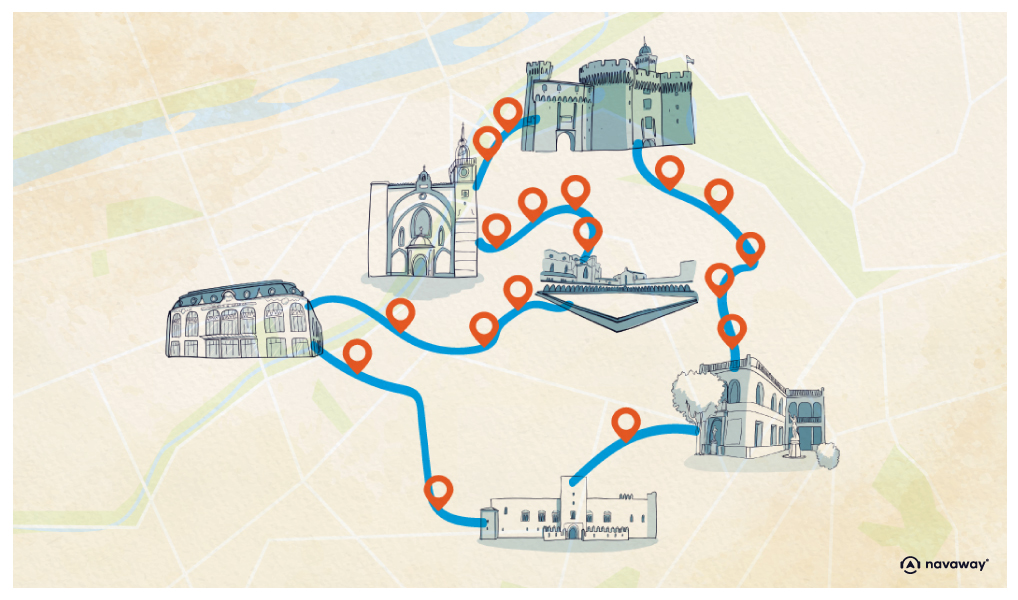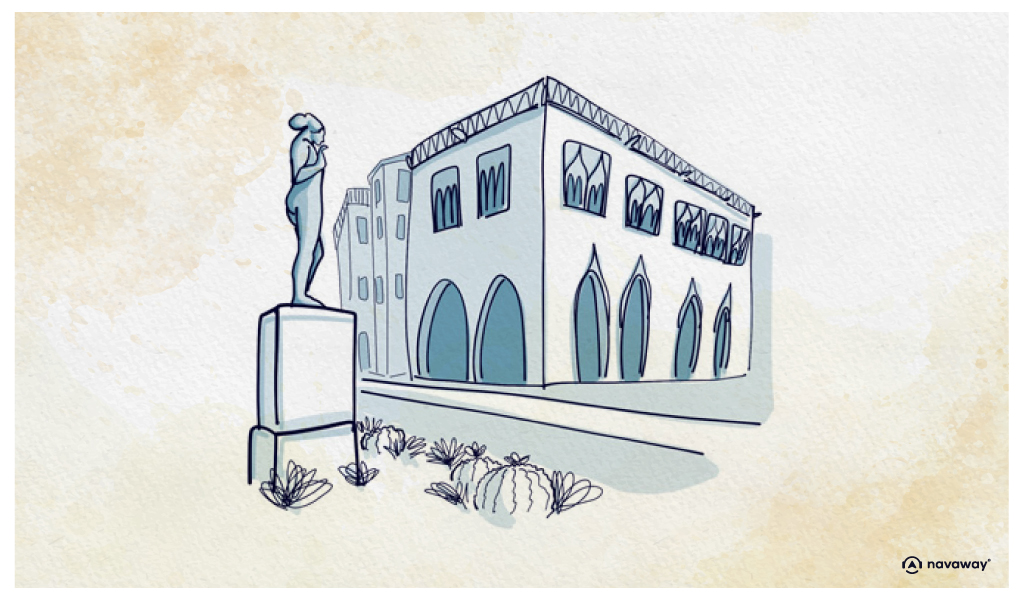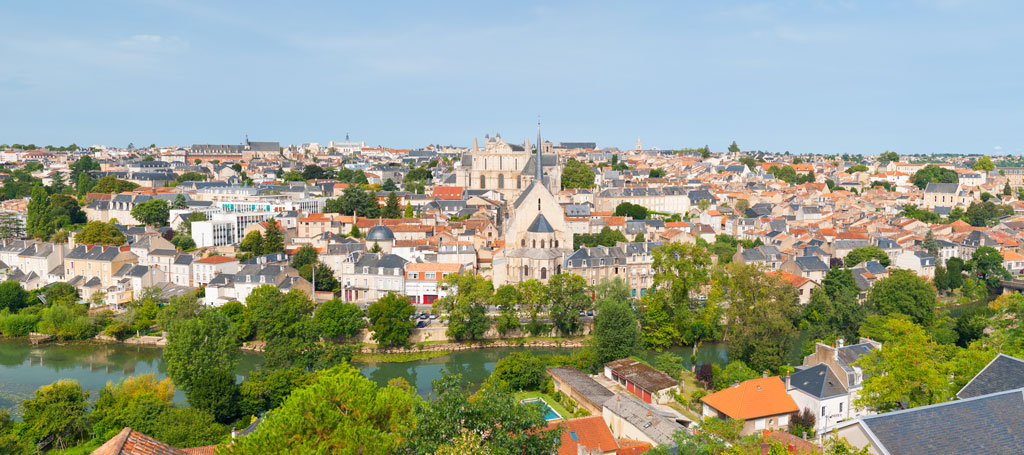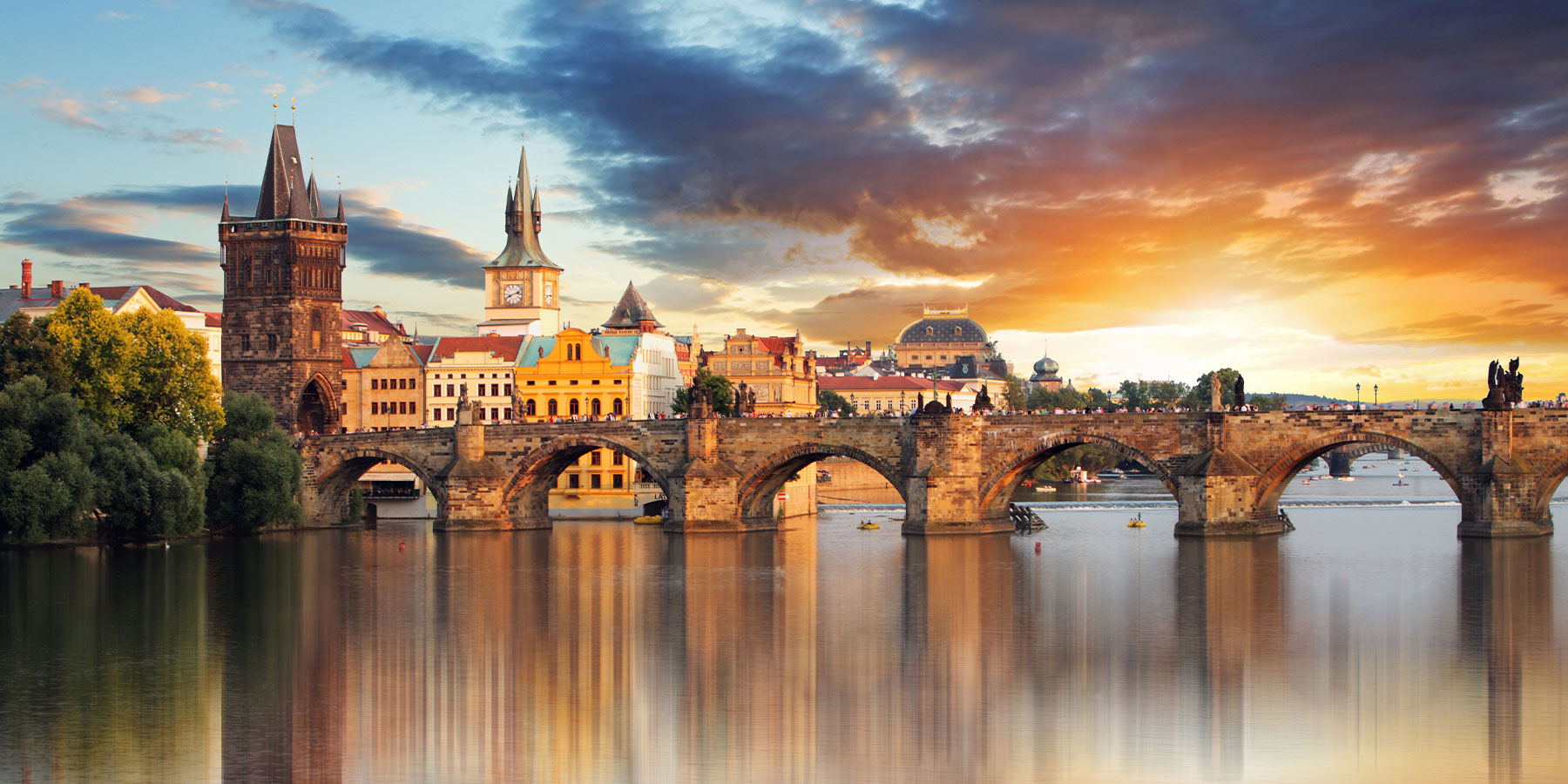
The Loge de Mer

This point of interest is available as audio on the tour: Visit Perpignan, A Taste of French Catalonia
On your right, you can admire the Loge de Mer, or the Sea Lodge in English. Massive, rectangular, and yet surprisingly elegant, the Loge de Mer is a truly unique landmark in Perpignan. Alongside its neighbours — the Town Hall and the Palace of the Deputation — it proudly forms what was once known as the “trident of political and commercial elites.” These figures gathered right here on the plaça dels rics homes, or “the square of the rich men,” now known as Place de la Loge. The story begins in 1388, when John I of Aragon launched the idea of creating a Consulate of the Sea — an institution meant to regulate and promote trade throughout the city and county, which at the time was closely tied to maritime activity. A stock exchange was also added to help stabilise the value of goods. But the building itself didn’t start taking shape until 1397. It originally had four arcades and gained two more around 1540, on the Rue des Marchands side, after Charles V — the most powerful monarch of the early 16th century — entered Perpignan. At that time, a wrought iron caravel was installed on the corner of the building. If you look up, you’ll see it — though what’s there now is a replica; the original is kept safely inside the Town Hall. Perpignan grew rich from trade, especially from exporting its local wool fabrics — fine cloth used for dresses and heavier weaves for capes. Its textiles were highly sought-after across Europe and even shipped in bales to ports in the Middle East and Asia. As trade declined at the end of the 18th century, the Loge de Mer took on new roles. It became a theatre, then a mail depot during the French Revolution. In 1842, a café opened on the ground floor. And in the 1980s, believe it or not, a branch of the Quick fast-food chain — originally from Belgium but especially popular in France — moved in. Thankfully, in 2017 the building was bought back by the city, and it now houses Perpignan’s beautiful tourist information centre. Before you move on to the next stop, take a moment to admire the nearby statue of Venus, created in 1928 by Aristide Maillol — the famous French painter and sculptor of Catalan origin. His work can be found all over France, including the peaceful Tuileries Gardens in Paris, and the Museum of Fine Arts in Lyon.


Discover Perpignan with app
An interactive guide through the most beautiful streets, squares, and districts
19 fun audioguides full of historical facts, anecdotes, and legends





Comments